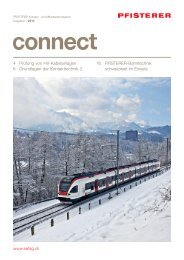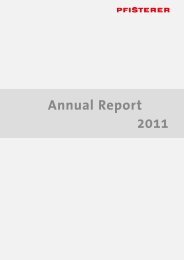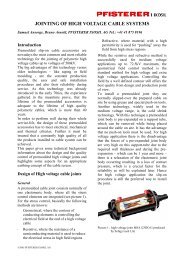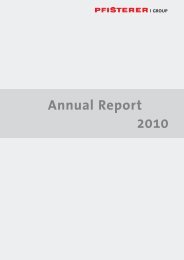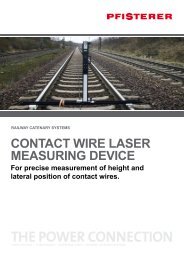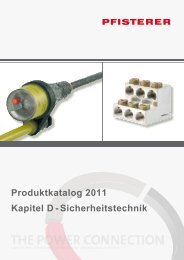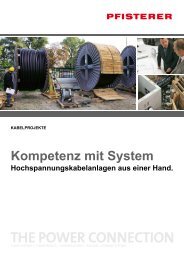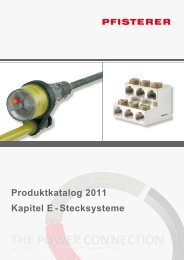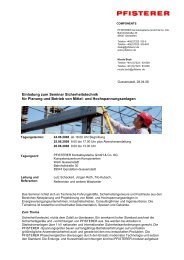Bending of helically twisted cables under variable ... - Pfisterer
Bending of helically twisted cables under variable ... - Pfisterer
Bending of helically twisted cables under variable ... - Pfisterer
You also want an ePaper? Increase the reach of your titles
YUMPU automatically turns print PDFs into web optimized ePapers that Google loves.
Preamble<br />
I completed this thesis in the course <strong>of</strong> my pr<strong>of</strong>essional engagement at the Sefag AG company in<br />
Malters/Lu. For this reason, I am grateful to Mr. K.H. <strong>Pfisterer</strong>, the main Sefag shareholder, for having<br />
enabled me to carry out these demanding studies.<br />
There are two sides to working on a thesis whilst pr<strong>of</strong>essionally employed:<br />
On the one hand, one embarks on this from a certain age, which should be accompanied by some<br />
maturity and therefore the necessary discernment <strong>of</strong> the essential. The assertiveness required in<br />
pr<strong>of</strong>essional life for the pursuance <strong>of</strong> goals certainly also helps to further the task at hand. In many<br />
cases one also has a better perspective on the practical problems, again helping with the execution <strong>of</strong><br />
the work.<br />
Also the stress accompanying such work, performed mainly in spare time, is significant - both<br />
personally and for the family in particular. Only the anticipation <strong>of</strong> achieving the target you set yourself<br />
and the expectation, or rather the hope, <strong>of</strong> making a personal contribution to an interesting and<br />
user-oriented engineering problem constantly encourage you to “stick with it”.<br />
This was exactly my experience over the years in which I was engaged with this project. And for this<br />
reason I wish to once again thank all those who helped me with the completion <strong>of</strong> the work behind this<br />
thesis, now that it is finished.<br />
Special thanks first <strong>of</strong> all to my “PhD supervisor”, Pr<strong>of</strong>. Dr. Meyer-Piening, for his willingness to support<br />
this work, for making the infrastructure <strong>of</strong> the Institute for Light Construction and Cableway Technology<br />
(ILS/ETH) available, especially for carrying out the experiments, but particularly for his always<br />
constructive criticism and valuable comment – helping me find my way out <strong>of</strong> many a dead end.<br />
I am very grateful also to Dr. V. Esslinger <strong>of</strong> the EMPA and Pr<strong>of</strong>. Dr. G. Oplatka <strong>of</strong> the ILS, who were<br />
always available for discussions, made valuable suggestions and in this sense were always at my side<br />
in this work, also acting as co-supervisors.<br />
A special word <strong>of</strong> thanks goes to my friend Pr<strong>of</strong>. Dr. M. Leider. Not only was I able to benefit from his<br />
earlier work, constituting a milestone on this topic, but he was also constantly available in word and<br />
deed, making many valuable contributions.



